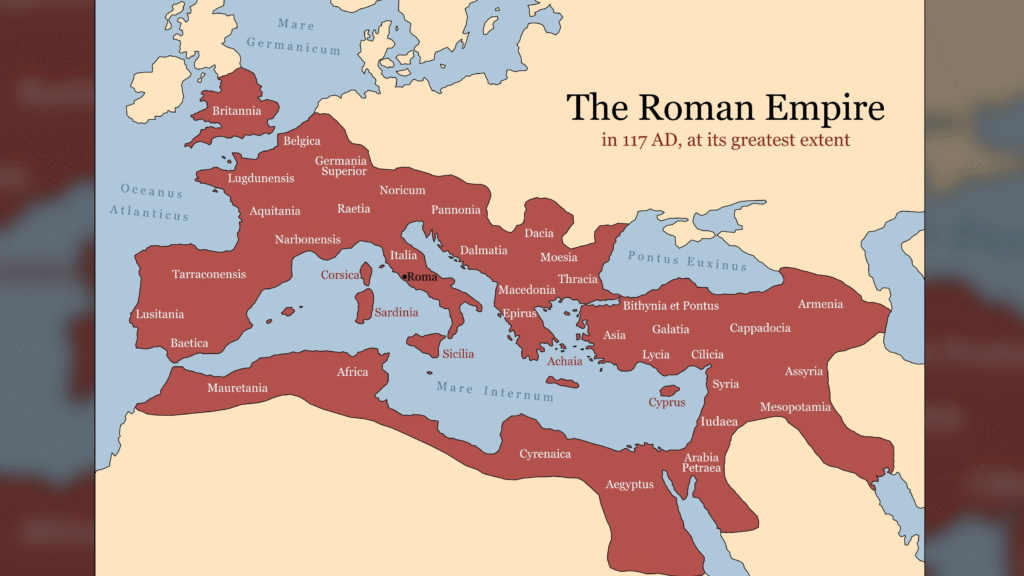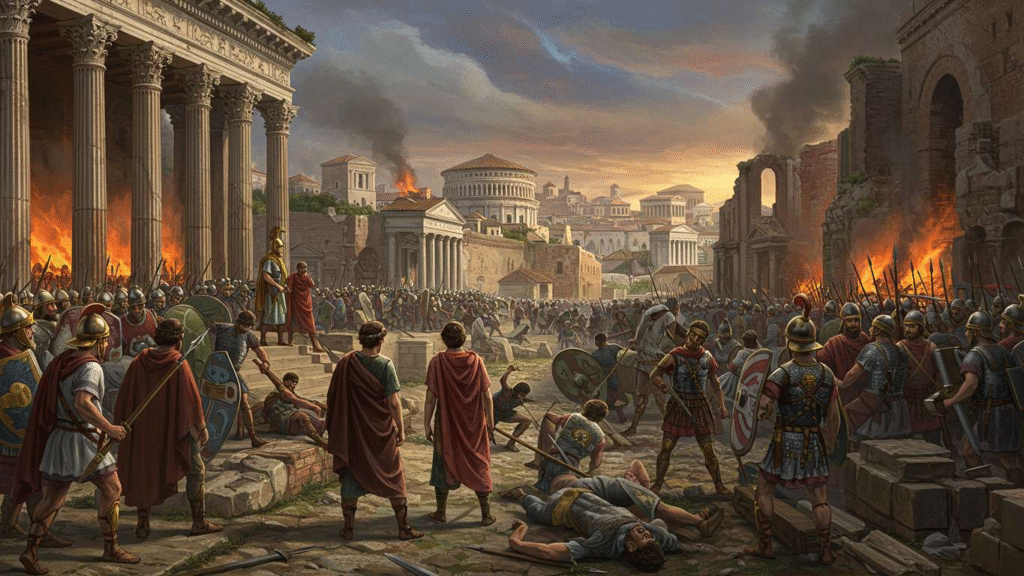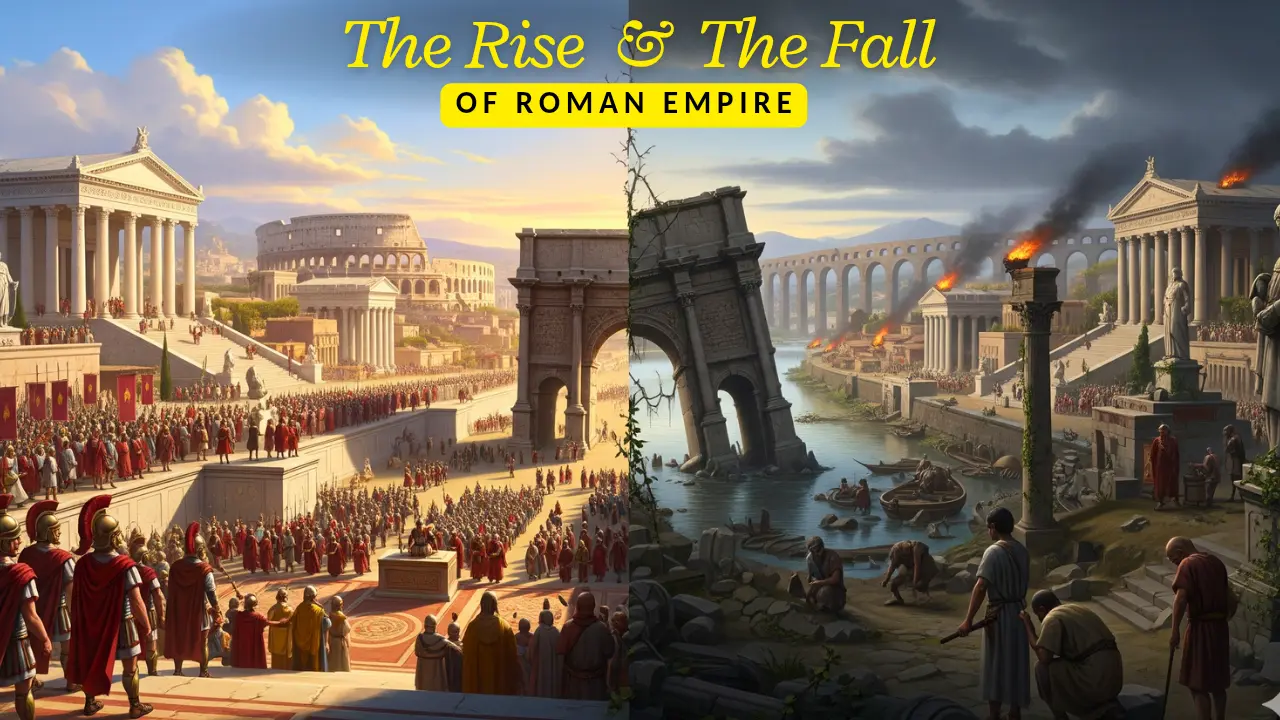The story of the Roman Empire is an epic tale of ambition, innovation, and military might. It began as a small settlement on the Italian peninsula, grew into a republic, and ultimately transformed into the most powerful empire the world had ever seen. What fueled this incredible ascent? It wasn’t just brute force; it was a combination of brilliant engineering, political savvy, and a relentless drive for expansion.
The journey started with the Roman Republic. Unlike a monarchy, the republic was governed by elected officials, a system that fostered a strong civic identity and allowed for a degree of political flexibility. This period was marked by significant military expansion, most notably during the Punic Wars against Carthage, a rival North African power. Rome’s victory in these conflicts secured its dominance in the Mediterranean.
The transition from republic to empire was a tumultuous one. Internal conflicts and the rise of powerful generals like Julius Caesar eventually led to the end of the republic. Caesar’s assassination and the subsequent power struggles paved the way for his adopted son, Octavian, who would become Emperor Augustus. His reign marked the beginning of the Pax Romana, or “Roman Peace,” a 200-year period of unprecedented stability and prosperity. During this golden age, the empire reached its territorial peak, controlling a vast area from Britain to Mesopotamia.
Key Factors in Rome’s Success
- Military Discipline and Innovation: The Roman legion was a formidable fighting force, known for its strict discipline, organization, and advanced tactics. They built an extensive network of roads and military camps, allowing for rapid troop movement and supply.
- Engineering and Infrastructure: From aqueducts that supplied cities with fresh water to the Colosseum that entertained the masses, Roman engineering was second to none. The vast network of Roman roads facilitated trade and communication across the empire.
- Adaptable Governance: The Romans were masters of administration. They assimilated conquered peoples, often granting them citizenship and integrating their cultures into the Roman world, which helped maintain stability over a vast, diverse territory.
The Golden Age and the Seeds of Decline
The Pax Romana was a time of immense cultural and economic flourishing. Trade routes were secure, and goods flowed freely from one end of the empire to the other. Roman law, which still influences legal systems today, was codified and applied across the provinces. Great works of literature and philosophy were produced, and monumental architectural feats were completed.

However, the very success of the empire sowed the seeds of its own destruction. The vastness of the empire made it increasingly difficult to govern.
Also Read: Unveiling Amsterdam: History, Culture, and Culinary Delights
Political instability became a recurring issue, with a rapid succession of emperors, often chosen by the military rather than through a stable process. This period, known as the Crisis of the Third Century, saw the empire on the brink of collapse due to civil wars and external invasions. For instance, in just 50 years (235-284 AD), there were more than two dozen different emperors, a stark statistic that highlights the political chaos.
The Major Causes of the Fall
- Economic Instability: Constant warfare and a growing bureaucracy led to soaring taxes and inflation. The overreliance on slave labor stifled technological innovation, and a trade deficit with the East, particularly for luxury goods like silk, drained the empire’s gold reserves.
- Political Corruption and Instability: The sheer size of the empire made centralized control nearly impossible. A series of weak, short-lived emperors and the increasing influence of the military in politics eroded the legitimacy of the government.
- Barbarian Invasions: The empire’s borders came under increasing pressure from Germanic tribes and other groups, spurred on by climate change and population shifts. The Battle of Adrianople in 378 AD, where a Roman army was decisively defeated by Visigothic invaders, is often cited as a turning point that demonstrated Rome’s military decline.
The Final Collapse and Lasting Legacy
The final centuries of the Roman Empire saw a slow but steady fragmentation. Emperor Diocletian attempted to stabilize the empire by dividing it into two halves – the Western Roman Empire and the Eastern Roman Empire (later known as the Byzantine Empire). While this temporarily eased administrative burdens, it also created a permanent divide.

The Western Empire, facing the brunt of the barbarian invasions, finally collapsed in 476 AD when the last emperor, Romulus Augustulus, was deposed by the Germanic chieftain Odoacer. While this date is often seen as the definitive end, it was more of a gradual process than a single event.
The legacy of Rome is undeniable. Its influence on Western civilization is immense and can be seen in:
- Law and Governance: The principles of Roman law, such as the concept of “innocent until proven guilty,” are foundational to modern legal systems.
- Language: The Romance languages (Spanish, French, Italian, Portuguese, Romanian) all evolved from Vulgar Latin, the language of the Roman people. English also contains a significant number of Latin-derived words.
- Engineering and Architecture: The design of buildings, from domes to arches, and the continued use of concrete and other building materials are a testament to Roman ingenuity.
For more on the cultural impact, check out this post on the Roman influence on modern society. The history of the Roman Empire is a profound reminder that even the mightiest civilizations are not immune to decline. It offers a powerful lesson on the importance of political stability, economic health, and social cohesion.
As historian Edward Gibbon famously wrote in The History of the Decline and Fall of the Roman Empire, “The true cause of the ruin of the empire was the lack of good government.”
A Timeless Lesson
The rise and fall of the Roman Empire is a cautionary tale and a source of inspiration. It shows what humanity can achieve through cooperation, engineering, and shared purpose, but also the fragility of even the most powerful institutions when faced with internal strife and external pressures. The empire may have fallen, but its legacy continues to shape our world.

















